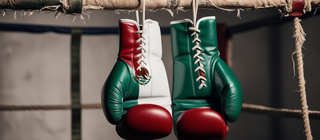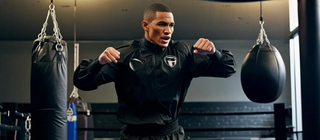Combat Sports and Personal Defence: Which Discipline to Choose?
Self-defense is a fundamental skill for dealing with dangerous situations in everyday life. Combat sports provide an excellent foundation for developing practical abilities and improving both physical and mental readiness. In this article, we’ll explore the connections between self-defense and some of the most popular disciplines—such as boxing, Muay Thai, MMA, kickboxing, karate, and Brazilian Jiu Jitsu—examining their strengths and limitations.
Self-defense and Boxing
Boxing is one of the most effective combat sports for developing self-defense skills. It focuses on precise punches, speed, and coordination. Training improves reflexes and the ability to dodge blows—essential skills in an assault situation.
Pros:
- Improves speed and the ability to deliver powerful punches.
- Teaches you how to maintain distance from an opponent.
- Develops stamina and mental toughness.
Cons: Boxing does not include kicks, locks, or grappling techniques, limiting its use in certain self-defense scenarios.
Example of use: If an attacker tries to punch you, boxing teaches you how to dodge and quickly counter with a direct strike to neutralize them.
Self-defense and Muay Thai
Known as the “art of eight weapons,” Muay Thai utilizes punches, elbows, kicks, and knees, making it extremely versatile. It’s especially useful in tight spaces because of its clinch techniques and close-range strikes.
Pros:
- Includes a wide range of offensive and defensive moves.
- Ideal for close-range scenarios.
- Intensive training improves overall physical condition.
Cons: Mastering complex techniques takes time and may not be ideal for beginners seeking quick solutions.
Example of use: If an attacker tries to grab you, Muay Thai’s clinch allows you to control the distance and respond with effective knee strikes to deter them.
Self-defense and MMA
Mixed Martial Arts (MMA) combine boxing, Muay Thai, wrestling, and Brazilian Jiu Jitsu, offering a complete set of self-defense skills. MMA training prepares you to handle both stand-up and ground fighting situations.
Pros:
- Versatile approach that covers every combat range.
- Realistic training simulates dangerous situations.
- Excellent physical and mental preparation.
Cons: The complexity of MMA requires significant time and dedication to achieve advanced skills.
Example of use: If an attacker pushes you to the ground, MMA prepares you to regain control with grappling and striking techniques to defend yourself effectively.
Self-defense and Kickboxing
Kickboxing combines punches and kicks, focusing on speed, power, and technique. It’s an excellent discipline for enhancing your striking ability at various distances and learning how to defend yourself on your feet.
Pros:
- Beginner-friendly and relatively easy to learn.
- Efficient training to improve strength and coordination.
- Suitable for stand-up combat scenarios.
Cons: Lacks ground fighting and submission techniques, limiting options in some self-defense contexts.
Example of use: If an attacker tries to rush at you, a front kick from kickboxing can be used to keep them at a distance.
Self-defense and Karate
Karate emphasizes precise strikes, quick movements, and defensive techniques. It also includes evasion strategies and targeted strikes to weak spots, making it effective for self-defense.
Pros:
- Teaches specific self-defense techniques.
- Promotes discipline and self-control.
- Suitable for all ages and skill levels.
Cons: Some karate styles can be overly formal and less realistic in actual self-defense contexts.
Example of use: In the event of a sudden attack, a well-placed strike to the knee or face—learned in karate—can disable the aggressor and allow you to escape.
Self-defense and Brazilian Jiu Jitsu
Brazilian Jiu Jitsu (BJJ) specializes in ground fighting, using joint locks and chokes to immobilize opponents. It’s particularly helpful when facing larger or stronger opponents.
Pros:
- Effective against bigger or heavier attackers.
- Excellent for neutralizing an assailant on the ground.
- Gives an advantage in prolonged grappling situations.
Cons: Less useful against multiple attackers or in situations where ground fighting is risky.
Example of use: If an attacker forces you to the ground, BJJ teaches you how to employ an arm lock or a guard position to immobilize them and break free.
Which discipline is best for self-defense?
There’s no single answer to this question, as the choice depends on personal needs and the context you might face. For comprehensive self-defense, combining elements from different disciplines can be the most effective solution. For instance, boxing and kickboxing are excellent for stand-up situations, while Brazilian Jiu Jitsu excels in ground fighting. MMA offers a versatile blend, whereas karate and Muay Thai provide techniques that cover multiple striking ranges.
The most important factor remains consistent practice and situational awareness. Self-defense isn’t just about the techniques you learn, but also about being able to assess danger and make quick, effective decisions.
Conclusion
Combat sports offer an excellent starting point for building self-defense skills. Each discipline has its strengths and limitations, but all help improve safety, confidence, and physical fitness. Whether you choose boxing, Brazilian Jiu Jitsu, Muay Thai, or any other martial art, the key is to train regularly and approach every session with seriousness and determination.







